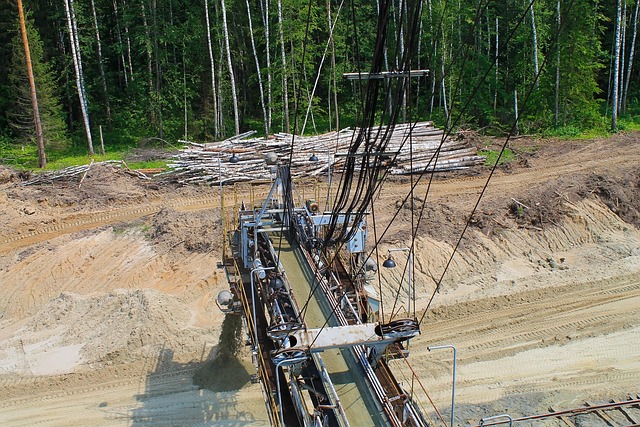
Integrated Career Development Relationships: Science Tech Workplace Culture
In the evolving landscape of scientific research and technology development, human resource strategies have shifted from simple talent acquisition to holistic career architecture. At the heart of this shift lies the concept of integrated career‑development relationships—a framework that blends individual growth plans with organizational objectives, fosters continuous learning, and cultivates an adaptive workplace culture. By embedding these relationships into everyday practice, firms can keep pace with rapid technological change while nurturing a workforce that feels valued, connected, and empowered.
Why Integrated Career‑Development Relationships Matter in Science and Tech
Science and technology sectors are distinguished by short product cycles, complex problem solving, and a constant influx of new tools. In such an environment, talent is a moving target: the skills that made a team successful yesterday may be obsolete tomorrow. Integrated career‑development relationships address this volatility by aligning individual aspirations with evolving business needs. The result is a workforce that can pivot quickly, innovate consistently, and maintain a high degree of engagement.
- Supports rapid skill acquisition around emerging technologies.
- Reduces turnover by demonstrating a clear investment in employee future.
- Encourages cross‑disciplinary collaboration through shared learning pathways.
Key Components of an Integrated Approach
While the terminology varies across organizations, most effective programs share a few core elements. These components create a feedback loop where learning, performance, and career progression reinforce one another.
- Personalized Learning Roadmaps: Employees receive data‑driven plans that map current competencies to desired future roles.
- Mentorship Networks: Structured pairing with senior scientists or engineers provides contextual guidance and knowledge transfer.
- 360‑Degree Feedback: Continuous evaluation from peers, subordinates, and supervisors informs development priorities.
- Recognition & Reward Alignment: Achievements in learning milestones translate into tangible incentives, reinforcing the growth culture.
- Leadership Development Pods: Small, purpose‑built groups allow emerging leaders to practice decision‑making in low‑risk settings.
Building the Cultural Foundations
Technical expertise alone does not create a thriving workplace. A culture that openly discusses failure, encourages experimentation, and values lifelong learning is essential. HR leaders can cultivate this environment through the following practices:
“When we speak of failures as data points, we create a safety net that invites risk without fear.” – HR Director, Quantum Analytics
By treating setbacks as learning opportunities, teams become more resilient, which in turn accelerates the uptake of new technologies. Additionally, transparency in career pathways removes ambiguity, allowing scientists and engineers to chart a clear trajectory without hidden barriers.
Metrics That Reflect Success
Measuring the impact of integrated career‑development relationships requires a blend of quantitative and qualitative indicators. HR departments can track:
- Employee retention rates in high‑skill roles.
- Average time to competency for new tools or methodologies.
- Participation rates in internal certification programs.
- Survey scores on perceived support for career growth.
- Number of internal promotions versus external hires.
These metrics provide a holistic view of how well the organization’s development ecosystem is functioning.
Case Study: A Tech Lab’s Transition
Consider a mid‑size biotechnology lab that traditionally relied on ad‑hoc mentorship and annual performance reviews. After implementing an integrated career‑development framework, the lab saw a 30% increase in internal mobility and a 25% reduction in time‑to‑product for its flagship AI‑driven diagnostics platform. The change was driven by a structured learning portal, quarterly skill audits, and a peer‑reviewed innovation showcase. As employees moved more freely across projects, the lab’s culture shifted from siloed expertise to collaborative problem‑solving.
Common Challenges and How to Overcome Them
Implementing integrated career‑development relationships is not without obstacles. Below are frequent hurdles and actionable mitigations:
- Resistance to Structured Learning: Some professionals perceive formal training as bureaucratic. Solution: Allow flexible learning paths and let individuals choose micro‑credentials that fit their schedules.
- Limited Managerial Time: Supervisors often juggle multiple priorities. Solution: Embed career planning into existing review cycles and provide manager training focused on coaching.
- Resource Constraints: Budgetary limits may restrict certification costs. Solution: Leverage internal subject matter experts to deliver workshops and partner with open‑source communities for cost‑effective tools.
- Measurement Ambiguity: Difficulty in linking learning to performance. Solution: Adopt OKRs (Objectives and Key Results) that tie learning milestones to project deliverables.
The Future Landscape
As artificial intelligence, quantum computing, and bioinformatics continue to reshape the science and technology domain, integrated career‑development relationships will become even more critical. Anticipated trends include:
- Real‑time skill dashboards that adjust learning paths based on project demands.
- Hybrid mentorship models combining human insight with AI‑generated insights.
- Cross‑industry learning ecosystems that allow talent to transfer skills between biotech, fintech, and aerospace.
- Greater emphasis on soft skills—communication, ethical decision‑making, and adaptive leadership—paired with technical prowess.
HR professionals who embed these future‑ready strategies into their organizational DNA will not only retain top talent but also position their companies at the forefront of innovation.
Final Thoughts
Integrated career‑development relationships represent more than a set of HR tools; they are a cultural commitment to continuous evolution. By synchronizing individual growth with collective ambition, science and technology companies can thrive amid disruption while fostering a workforce that is resilient, engaged, and ready to tackle tomorrow’s challenges.



